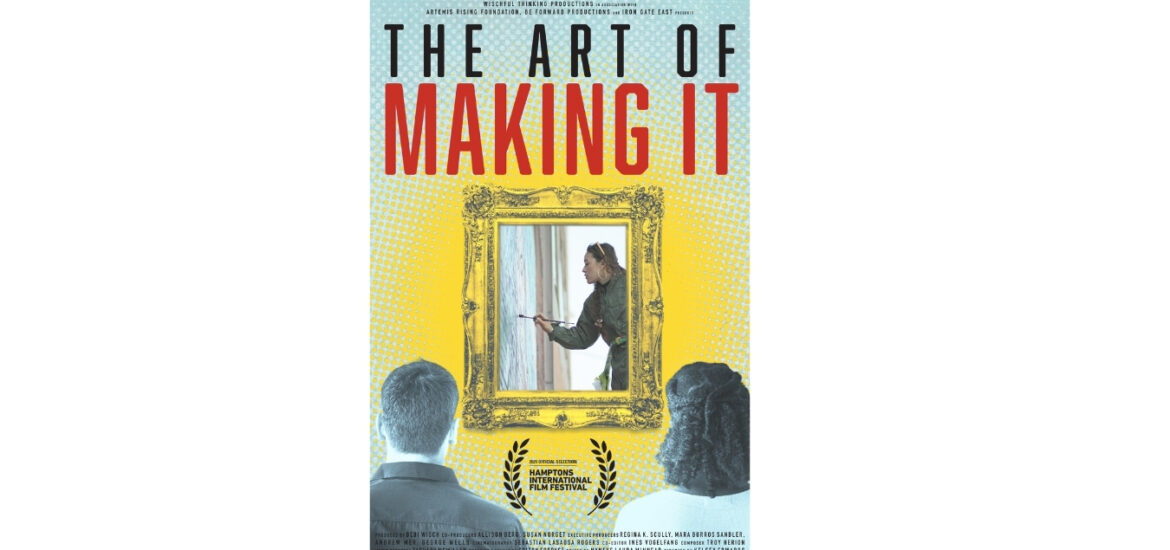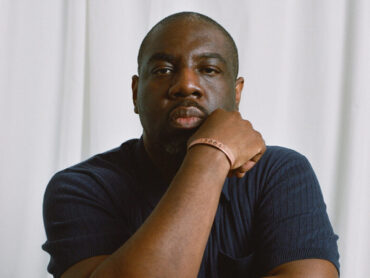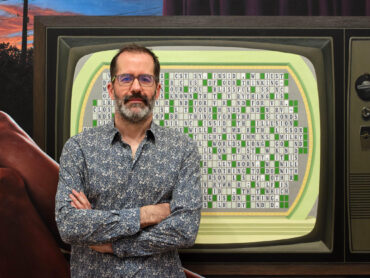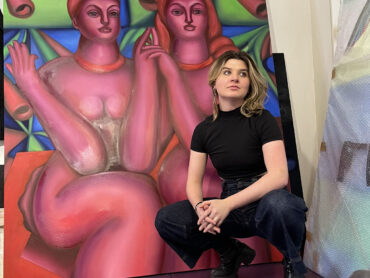THE ART OF MAKING IT is a film that speaks to the hearts and minds of creatives everywhere. It weaves a beautiful tapestry of many voices—a vital discussion opener and something we can all relate to: the struggle to become seen and heard and acclaimed for the work that we do.
Artists have challenged policies, enhanced societies and visually apprehended the heart of humanity in all its variations for thousands of years. Despite their devotion and cultural importance, artists are historically undervalued, undersupported, and underestimated.
THE ART OF MAKING IT is a firsthand unveiling and inward examination of the art world from some of the personalities making the gears shift. A brilliant gathering of personal perspectives from veterans such as Jerry Saltz, Charles Gaines, Andrea Bowers, Dave Hickey, Anne Pasternak, Michael Govan and Helen Molesworth, the film also features a stellar cast of rising stars and art world newcomers, including Sebastian Errazuriz, Cesar Garcia-Alvarez, Nicholas Cueva, and Andrew Gori & Ambre Kelly to name a few. The filmmakers also speak with insiders who speak with candor and insight, and the list goes on to include Lisa Corrine Davis, Dr. Lara Evans, Stefan Simchowitz, Andrew Freiser & Jessica Fredericks, James Salomon, and Anton Kern. The film’s critics, art advisors, gallery owners, art fair founders, curators, scholars and authors proffer their observations and opinions and experiences in ways that are not always in sync.
All is balanced, however, by the champions of the film, a handful of very different artists at pivotal points in their professions arriving where they are in very different ways. Jenna Gribbon, Chris Watts, Felipe Baeza, Gisela McDaniel, and Hilde Lynn Helphenstein aka “Jerry Gagosian”. It is an intrinsic, contemplative, and heartfelt look at how artists live and work, trying to navigate their career while staying sincere to their craft and voice. But most importantly, as Director Kelcey Edwards puts it, “It is a love letter to the art world and reminds people why art matters and the need for more support within it.”
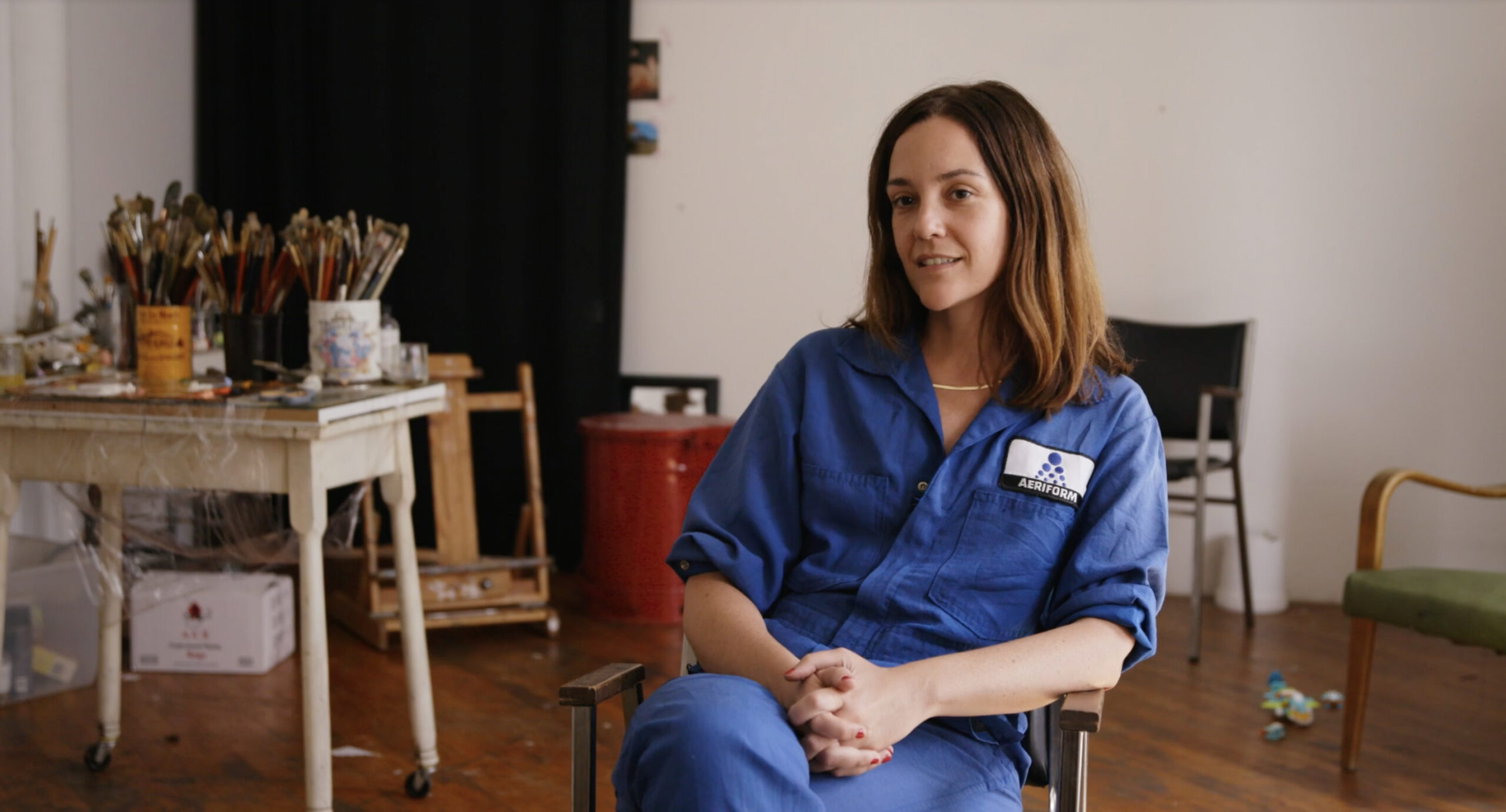
Artist Jenna Gribbon as seen in Kelcey Edwards’ documentary The Art of Making It! Image Courtesy of Wischful Thinking Productions
Kelcey spoke to Donnalynn Patakos about the journey and the joy of making the film.
DP: How did this idea come about?
KE: I got into it in a bizarre way. I met the Producer of the film Debi Wisch, who had just produced “The Price of Everything” through my friend James Solomon. At the time, James was planning to launch an art fair for MFA students, and I pitched an idea I had to direct a film centered on this storyline.
The idea was to give a behind-the-scenes look at what it’s like to create an art fair from nothing, but as a backdrop to the young MFA students, many of whom would be leaving their programs, moving to big cities, and launching their careers. We hoped to follow five artists or so over the course of the year to document their challenges as well as their breakthrough moments in order to give a ground up look at the inner workings of the art world.
We did an initial shoot with James in New York City and Dick Hickey in Santa Fe New Mexico. Over this period, the MFA fair was put on hold and the focus of the film shifted to the world of emerging artists and lifting the veil on the art world and all of its different domains, from MFA programs to the market to cultural institutions and how these systems work, and at certain points, how they don’t. We began exploring and questioning what our current power structures look like in the art world, and used the opening scene with James setting up Sebastian Errazuriz’s exhibition The Beginning of The End with its 3D printed sculptures of tech titans and political figures as a metaphor for how power structures were being questioned in the art world and by the art world.
Next, my producer suggested I attend Hunter College’s MFA show. There I was introduced to Jenna Gribbon. She was just so captivating, and I felt she had a great story to tell. You could feel the momentum building around her and the excitement.
The third thing that happened was I met Chris Watts through a mutual friend. Chris shared his story, and that was it! His storyline was the anchor to everything and then we found our other artists through our co-producer Allison Berg who was friends with an amazing curator César Garcia (also in the film), through whom we met Filipe Baeza and Gisela McDaniel. Hilde Lynn Helphenstien was an absolute gift, and we happened to be filming in LA when the story broke about Jerry Gagosian, so we reached out and happily she agreed to speak with us.
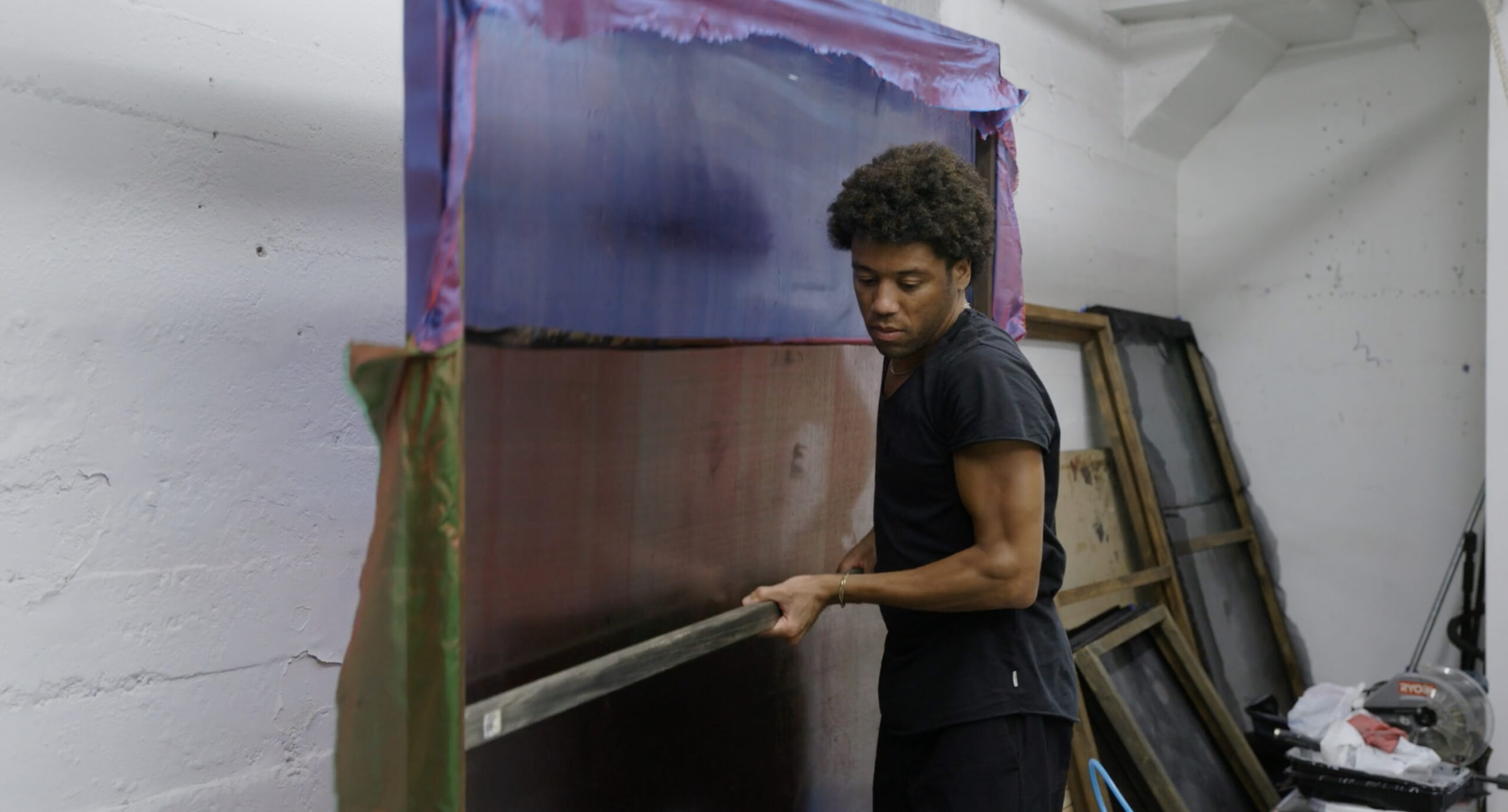
Artist Chris Watts as seen in Kelcey Edwards’ documentary The Art of Making It! Image courtesy of Wischful Thinking Productions
DP: How did you choose the artists?
KE: For me, one big overarching core value, in telling a story like this, was that we needed to have as much diversity as possible, both in front of and behind the camera. That was a criteria for me from the onset. It is a core value I have, especially after doing my last documentary on the history of Wonder Woman. The film was all about the importance of having representative stories, especially hero stories that show us that we can all be heroes. That heroes can—and should–look like all of us. One of the big takeaways from that documentary is the importance of having gender diversity behind the camera because so many of the narratives that we consume are told by men. So, I extended that mandate to this film. I also felt, to be representative of a pluralistic society, the artists needed to have as much range as possible, including in terms of region, type of work they make, whether abstract or figurative, etc. Also, a high profile documentary becomes a sort of platform, and it was important to me that our casting process was more inclusive and representative than the broader art world, where many of the demographics we cast are notoriously marginalized. All that said, at the end of the day, casting is intuitive, and the people we picked were people with compelling stories, who were making interesting work, and who were open to working with our team. The most significant commonality is that they’re all having their launch, being shot out of the cannon to speak.
DP: What about the experts you have in the Film?
KE: In terms of the cast of experts that we talked to to get insight into all these different realms, there’s a lot of capturing of dichotomies in the film where at times people say things that echo one another, but they also say things that completely contradict one another. So it shows you that people often disagree on how artists should navigate the market or how to behave on some of the most pressing issues artists face.
But you know, every time we come back to our artists, you feel their heartfelt determination to create authentic work and make work that they can really feel and communicate. So you get the sense that this young generation are the people who are going to lead the way forward and make the world better, not just through their work but through their insistence on taking challenging subject matter and putting it in a frame, forcing us to consider it, and think about it, and talk about it.
It was very exciting to meet Felipe (Baeza), who has a unique status among the cast in that he is undocumented. These unique storylines are crucial because, for example, later in the film, when we’re all going through quarantine, and many people assume everyone’s having this collective experience of the newness of needing to remain isolated; you have the perspective of somebody who says, “I’ve been living like this since I got to this country.” So, you know, that’s the value of those voices. I mean, he couldn’t attend his first big show abroad because he wouldn’t have been able to get back into the country. It’s heartbreaking.
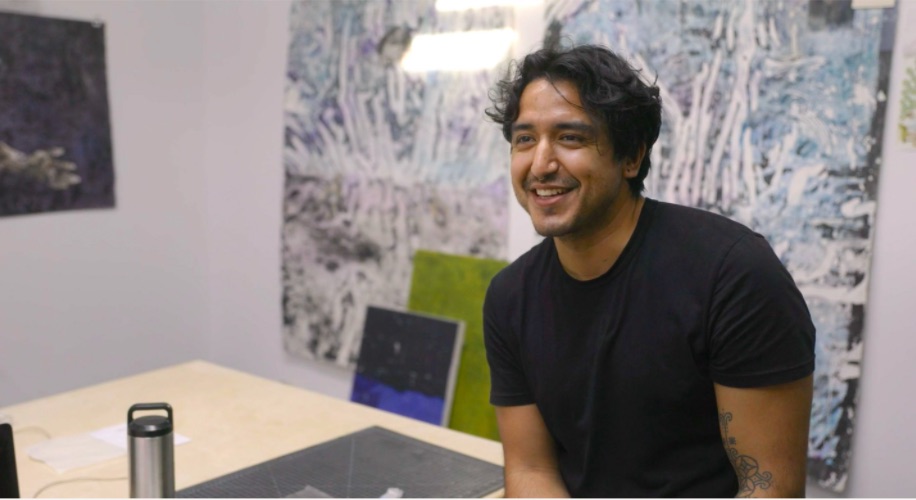
Artist Felipe Baeza as seen in Kelcey Edwards’ documentary The Art of Making It! Image courtesy of Wischful Thinking Productions
DP: Do you follow them around in their day-to-day life, have interviews with them, or was it more like a year-in-the-life of the artists?
KE: It ended up being a year-in-the-life in a way, because our ability to film got curtailed after a year of shooting because of COVID. So it became a sort of cross-section of that moment in time. We began our edit and yet we continued our storytelling throughout. At one point in the film, we turn to specific points to capture what is happening, with headlines like, “The art world that’s been calling for socio-economic change is suddenly being faced with it”,” and “This is the end of the art world as we know it.” So everyone felt like it was like this radical transformation of a world that has looked and behaved a certain way for a long time because a lot of it was no longer viable, and everyone was suddenly forced to adapt. It changed our film, naturally, but in ways that I think strengthened the story. That’s part of the magic and adventure of documentary film. You are always chasing a moving target.
DP: How did you adapt?
KE: So, we did a combination of things. We had people create video journals. We put people in dialogue with each other and had them record their zoom calls, and we had a graphic animator who helped us give cinematic treatments to many of those elements. Part of what’s fun about film is that it’s essentially a series of moving visuals tied to sound and you can use collage-like techniques to tell a story. It doesn’t always have to be a camera with a camera person on one side and the subject on the other. So we got very creative with some of the storytelling, and I love how we were pushed to lean into the filmmaking as an artform. And then everything opened back up, we were able to get back in with people and do the needed editing for several months. That gave us time to understand where the holes were, the shifting landscape, and how that impacted the mood of the film.
For such a layered film, we wanted it to end somewhat like it began, leaving the audience to consider many open-ended questions, because many of these conversations are just beginning, and there are not easy answers. The film’s last line is Chris Watts saying, “Maybe this isn’t the end. Maybe it’s the beginning of everything.” And that’s how it feels still, and will probably feel for a while. The world has changed, irrevocably. So, we wanted to leave everyone with an uplifting zoomed-out reminder of how art has been around for 1000’s of years, and we have these incredible monuments, from Stonehenge to James Turrell’s Roden Crater, as a way of reminding everyone that this is a cultural legacy being created right now.
And it has never mattered more whose voices are being celebrated and what will remain to tell the story of this time. And people should be inspired by that and pay attention to it. Everybody, not just people in the art world.
DP: What is it like balancing family and the Film?
KE: Getting to make this film was the privilege of a lifetime, and it’s exciting. But, we’re talking about balancing the motherhood aspect of it, and I keep coming back in my head to something Jenna Gribbin said that didn’t make it into the film but just kind of echoes in my mind constantly where she talks about balancing grad school and being an artist with being a parent, and she said, “You know, it was important to me to show him what it means to be engaged with the world.”
And that sums it up right there. Anytime I feel guilty for missing out on time with my kids, I speak those words back to myself like a mantra. But that’s just how inspiring these people, whom I had the privilege of interviewing and getting to know, are to me.
For every one artist that is in our film, there are 1,000 like them in our communities around the country toiling away, and that’s where I hope that people who see the film will think, “I know an artist in this community” or, “I wonder who around me is doing work like this”. I hope that the dialogue makes the viewer consider the world differently and inspires people to show up to pay attention to working artists and hold the systems meant to support them a little more accountable. It’s something parents should think about when their kids say, “Hey, I want to go to art school.”
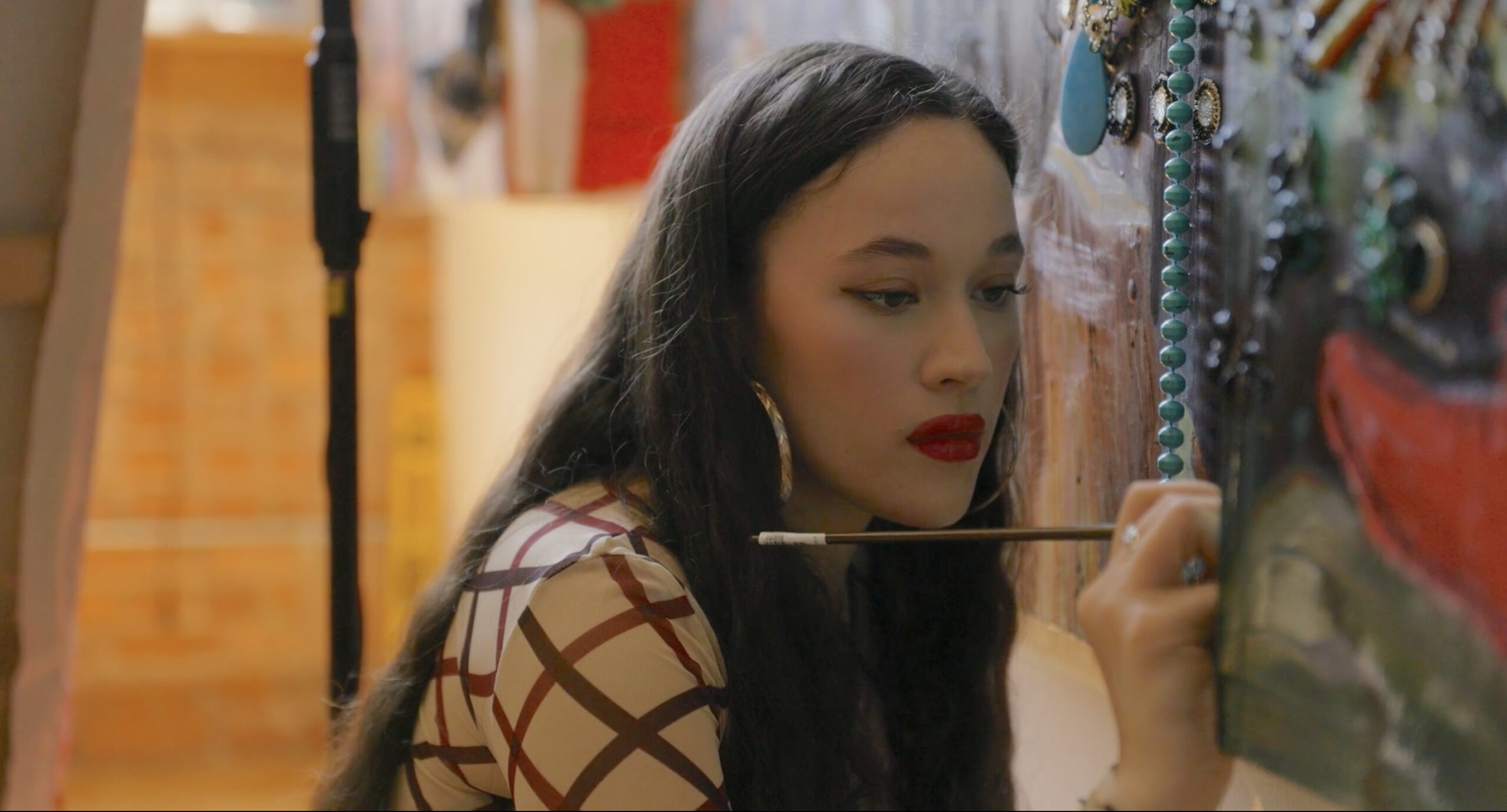
Artist Gisela McDaniel as seen in Kelcey Edwards’ documentary The Art of Making It! Image courtesy of Wischful Thinking Productions
These people walk among us, just like the rest of us, but they are doing something so selfless and heroic in that they’re taking a long hard look at the world we live in and sacrificing so much of their time and their life to make these objects for our consideration. To be in the presence of these artists is just so inspiring. There’s nothing else I’d rather be doing.
The film’s world premiere at Hamptons International Film Festival has sold out, however additional festival screenings will be announced soon.
Click for more information on the film.
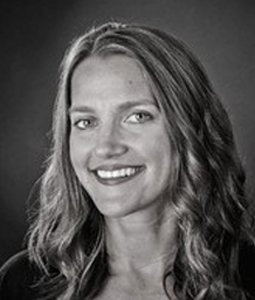
Kelcey Edwards
KELCEY EDWARDS
Director of The Art of Making It
